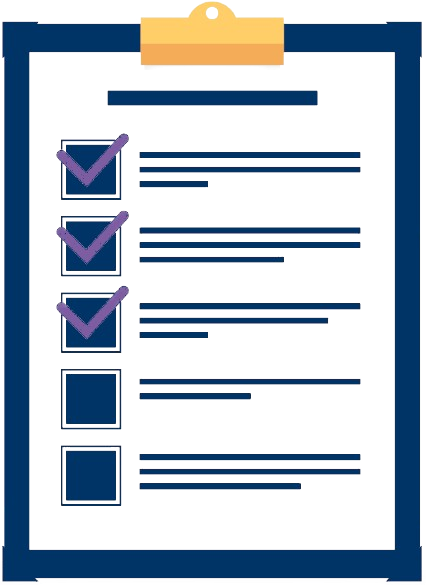Suggestions based on the Question and Answer that you are currently viewing
Vedula Advertising Agency was founded by Murali Vedula in January 2009. Presented on the next page are both the adjusted and unadjusted trial balances as of December 31, 2014. Instructions (a) Journalize the annual adjusting entries that were made. (b) Prepare an income statement and a retained earnings statement for the year ended December 31, and a classified balance sheet at December 31. (c) Identify which accounts should be closed on December 31. (d) If the note has been outstanding 10 months, what is the annual interest rate on that note? (e) If the company paid $10,500 in salaries and wages in 2014, what was the balance in Salaries and Wages Payable on December 31, 2013?
Ogala Corporation purchased a significant amount of raw materials inventory for a new product that it is manufacturing. Ogala uses the lower-of-cost-or-market rule for these raw materials. The replacement cost of the raw materials is above the net realizable value, and both are below the original cost. Ogala uses the average-cost inventory method for these raw materials. In the last 2 years, each purchase has been at a lower price than the previous purchase, and the ending inventory quantity for each period has been higher than the beginning inventory quantity for that period. Instructions (a) (1) At which amount should Ogala’s raw materials inventory be reported on the balance sheet? Why? (2) In general, why is the lower-of-cost-or-market rule used to report inventory? (b) What would have been the effect on ending inventory and cost of goods sold had Ogala used the LIFO inventory method instead of the average-cost inventory method for the raw materials? Why?
In a §351 exchange, how does the tax treatment differ in cases where liabilities are assumed with a tax-avoidance purpose versus where liabilities assumed exceed basis?
In an orthogonal cutting operation, the tool has a rake angle = 15°. The chip thickness before the cut = 0.30 mm and the cut yields a deformed chip thickness = 0.65 mm. Calculate (a) the shear plane angle and (b) the shear strain for the operation.
Name some of the important mechanical and physical properties that affect the machinability of a work material
Developing a reward system Synergy Ltd’s incentive plan is based on a shared bonus pool. Return on investment (ROI) is used as the main performance metric and is calculated as: Operating profit before tax ÷ Assets at gross book value Receipt of the incentive is dependent on the achievement of annual ROI targets. These targets were set in consultation with division managers. Moreover, the senior management team is rewarded on the basis of organisational ROI. The amount of bonus received by managers is determined as follows. The bonus pool is determined as: $100 000 + 10% of increases in annual combined ROI The bonus pool is shared 15 per cent to senior management (shared equally among 10 managers on the basis of organisational ROI), 50 per cent to divisional managers (shared among three managers according to divisional ROI) and 35 per cent to managers within the divisions (shared among 12 mangers according to divisional ROI). The bonus payment is in the form of cash. While some members of the management team have expressed concerns about the use of ROI as the key performance metric, the CEO is intent on keeping things simple and believes that ROI is a good summary measure on which to base senior management and divisional manager rewards. One of the senior managers, Sonia Lee, has become persistent in her objections to the current bonus scheme. She feels the scheme needs to reflect shareholder interests with suitable measures at each level of the company that reflect managers’ span of control and the right mix of incentives. Required You have been asked to advise the board of Synergy Ltd on a possible new incentive plan that addresses the concerns of Sonia Lee. Prepare a report outlining the detail of your incentive plan. Make sure you explain how your plan addresses Sonia’s concerns. (LO2 and 4)
A SMAW operation is accomplished in a work cell using a fitter and a welder. The fitter takes 5.5 min to place the unwelded components into the welding fixture at the beginning of the work cycle, and 2.5 min to unload the completed weldment at the end of the cycle. The total length of the several weld seams to be made is 2000 mm, and the travel speed used by the welder averages 400 mm/min. Every 750 mm of weld length, the welding stick must be changed, which takes 0.8 min. While the fitter is working, the welder is idle (resting); and while the welder is working, the fitter is idle. (a) Determine the average arc time in this welding cycle. (b) How much improvement in arc time would result if the welder used FCAW (manually operated), given that the spool of flux-cored weld wire must be changed every five weldments, and it takes the welder 5.0 min to accomplish the change? (c) What are the production rates for these two cases (weldments completed per hour)?
Elaine pays $40,000 cash for Martha’s one-third interest in Lakewood Partnership. Just prior to the sale, Martha’s basis in Lakewood is $140,000. Lakewood reports the following balance sheet: Assets: Tax Basis FMV Cash $ 50,000 $ 50,000 Land 370,000 70,000 Totals $ 420,000 $ 120,000 Liabilities and capital: Capital- Mary $140,000 - Martha 140,000 - Margaret 140,000 Totals $ 420,000 Assume the land had been purchased several years ago and the partnership does not have a §754 election in place. a. What are the amount and character of Martha’s recognized gain or loss on the sale? b. What is Elaine’s basis in her partnership interest? c. If Lakewood were to sell the land for $70,000 shortly after the sale of Martha’s partnership interest, how much gain or loss would Elaine recognize?
What are the two basic timing strategies? What is the intent of each?
} Marc and Michelle are married and earned salaries this year of $64,000 and $12,000, respectively. In addition to their salaries, they received interest of $350 from municipal bonds and $500 from corporate bonds.Marc and Michelle also paid $2,500 of qualifying moving expenses, and Marc paid alimony to a prior spouse in the amount of $1,500.Marc and Michelle have a 10-year-old son, Matthew, who lived with them throughout the entire year.Thus, Marc and Michelle are allowed to claim a $1,000 child tax credit for Matthew.Marc and Michelle paid $6,000 of expenditures that qualify as itemized deductions and they had a total of $5,500 in federal income taxes withheld from their paychecks during the course of the year. a. What is Marc and Michelle’s gross income?
What is a factory that performs casting operations usually called?
Merck & Co., Inc. and Johnson & Johnson are two leading producers of health-care products. Each has considerable assets, and each expends considerable funds each year toward the development of new products. The development of a new health-care product is often very expensive, and risky. New products frequently must undergo considerable testing before approval for distribution to the public. For example, it took Johnson & Johnson 4 years and $200 million to develop its 1-DAY ACUVUE contact lenses. Below are some basic data compiled from the financial statements of these two companies. Instructions (a) What kinds of intangible assets might a health-care products company have? Does the composition of these intangibles matter to investors—that is, would it be perceived differently if all of Merck’s intangibles were goodwill than if all of its intangibles were patents? (b) Suppose the president of Merck has come to you for advice. He has noted that by eliminating research and development expenditures the company could have reported $4 billion more in net income. He is frustrated because much of the research never results in a product, or the products take years to develop. He says shareholders are eager for higher returns, so he is considering eliminating research and development expenditures for at least a couple of years. What would you advise? (c) The notes to Merck’s financial statements note that Merck has goodwill of $1.1 billion. Where does recorded goodwill come from? Is it necessarily a good thing to have a lot of goodwill on a company’s books?
Hanson Company is constructing a building. Construction began on February 1 and was completed on December 31. Expenditures were $1,800,000 on March 1, $1,200,000 on June 1, and $3,000,000 on December 31. Compute Hanson’s weighted-average accumulated expenditures for interest capitalization purposes.
What are the four basic assumptions that underlie the financial accounting structure?
] Santiago and Lauren are equal partners in the PJenn Partnership. The partners formed the partnership seven years ago by contributing cash. Prior to any distributions, the partners have the following bases in their partnership interests: Partner Outside Basis Santiago $ 22,000 Lauren 22,000 On December 31 of the current year, the partnership makes a pro rata operating distribution of: Partner Distribution Santiago Cash $ 25,000 Lauren Cash 18,000 Property 7,000 (FMV) ($2,000 basis to partnership) a. What are the amount and character of Santiago’s recognized gain or loss? b. What is Santiago’s remaining basis in his partnership interest? c. What are the amount and character of Lauren’s recognized gain or loss? d. What is Lauren’s basis in the distributed assets? e. What is Lauren’s remaining basis in her partnership interest?
Last Chance Mine (LCM) purchased a coal deposit for $750,000. It estimated it would extract 12,000 tons of coal from the deposit. LCM mined the coal and sold it, reporting gross receipts of $1 million, $3 million, and $2 million for years 1 through 3, respectively. During years 1 – 3, LCM reported net income (loss) from the coal deposit activity in the amount of ($20,000), $500,000, and $450,000, respectively. In years 1 – 3, LCM extracted 13,000 tons of coal as follows: DepletionTons extracted per year (1) Tons of Coal (2) Basis (2)/(1) Rate Year 1 Year 2 Year 3 12,000 $750,000 $62.50 2,000 7,200 3,800 a. What is LCM’s cost depletion for years 1, 2, and 3? b. What is LCM’s percentage depletion for each year (the applicable percentage for coal is 10 percent)? c. Using the cost and percentage depletion computations from parts (a) and (b), what is LCM’s actual depletion expense for each year?
Jurassic Park Co. prepares monthly financial statements from a worksheet. Selected portions of the January worksheet showed the following data. During February, no events occurred that affected these accounts. But at the end of February, the following information was available. (a) Supplies on hand $715 (b) Monthly depreciation $257 (c) Accrued interest $ 50
At the balance sheet date, Clarkson Company held title to goods in transit amounting to $214,000. This amount was omitted from the purchases figure for the year and also from the ending inventory. What is the effect of this omission on the net income for the year as calculated when the books are closed? What is the effect on the company’s financial position as shown in its balance sheet? Is materiality a factor in determining whether an adjustment for this item should be made?
Identify the relevant characteristics of any security that can affect its yield. (LO1)
How might clustering effects be incorporated into endogenous growth theories?
Would it be possible for a country with a comparative disadvantage in a given product at pre-trade levels of output to obtain a comparative advantage in it by specialising in its production and exporting it?
What would have happened if countries in deficit had not responded to an outflow of gold by reducing total expenditure?
The following items are found in the financial statements. (a) Discount on bonds payable. (b) Interest expense (credit balance). (c) Unamortized bond issue costs. (d) Gain on repurchase of debt. (e) Mortgage payable (payable in equal amounts over next 3 years). (f) Debenture bonds payable (maturing in 5 years). (g) Notes payable (due in 4 years). (h) Premium on bonds payable. (i) Treasury bonds. (j) Bonds payable (due in 3 years). Instructions Indicate how each of these items should be classified in the financial statements.
On January 1, year 1, ABC Inc. issued 5,000 stock options with an estimated value of $10 per option. Each option entitles the owner to purchase one share of ABC stock for $25 a share (the per-share price of ABC stock on January 1, year 1). Assume the options vest on December 31, year 1, and that all 5,000 stock options were exercised on the vesting date when the stock was valued at $31 per share. Identify ABC’s tax deduction and book-tax difference associated with the stock options under the following alternative scenarios:
Imagine you had to determine whether a particular period of inflation was demand pull, or cost push, or a combination of the two. What information would you require in order to conduct your analysis?
The benefits of buying with AnswerDone:

Access to High-Quality Documents
Our platform features a wide range of meticulously curated documents, from solved assignments and research papers to detailed study guides. Each document is reviewed to ensure it meets our high standards, giving you access to reliable and high-quality resources.

Easy and Secure Transactions
We prioritize your security. Our platform uses advanced encryption technology to protect your personal and financial information. Buying with AnswerDone means you can make transactions with confidence, knowing that your data is secure

Instant Access
Once you make a purchase, you’ll have immediate access to your documents. No waiting periods or delays—just instant delivery of the resources you need to succeed.
